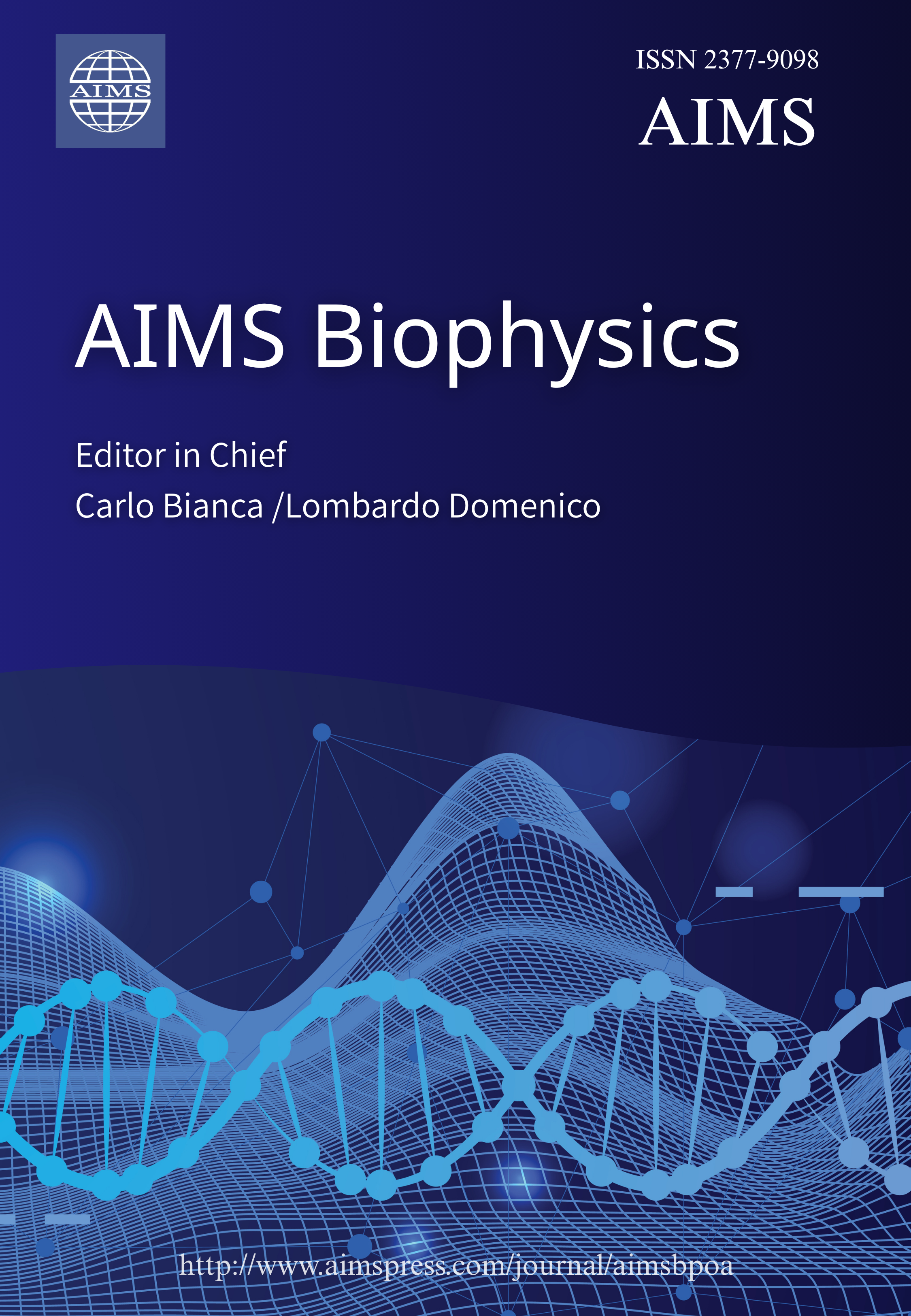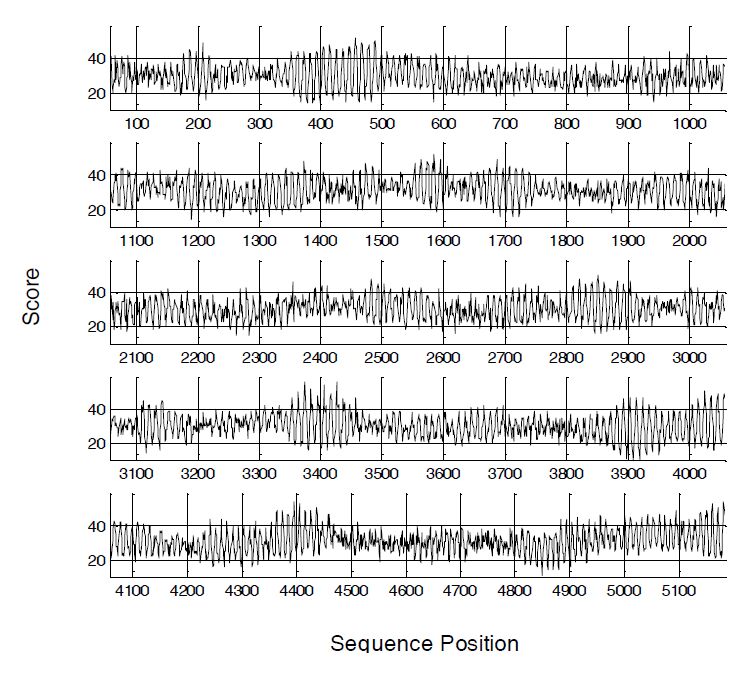Like the sequence of the strongest 601 clone nucleosome of Lowary and Widom, the SV40 genome sequence contains tracks of YR dinucleotides separated by small integers of the 10.4n base series (10, 11, 21 and 30 bases). The tracks, however, substantially exceed the nucleosome DNA size and, thus, correspond to more extended structure - columnar chromatin. The micrococcal nuclease digests of the SV40 chromatin do not show uniquely positioned individual nucleosomes. This confirms the columnar structure of the minichromosome, as well as earlier electron microscopy studies.
1.
Introduction
The classical beta function
and its relation with well known gamma function is given by
The Gauss hypergeometric, confluent hypergeometric and Appell's functions which are respectively defined by(see [27])
and
The Appell's series or bivariate hypergeometric series is defined by
for all $ \delta_1, \delta_2, \delta_3, \delta_4\in \mathbb{C}, \delta_4\neq 0, -1, -2, -3, \cdots, \quad |x|, |y| < 1 < 1 $.
The integral representation of hypergeometric, confluent hypergeometric and Appell's functions are respectively defined by
and
The $ \mathtt{k} $-gamma function, $ \mathtt{k} $-beta function and the $ \mathtt{k} $-Pochhammer symbol introduced and studied by Diaz and Pariguan [5]. The integral representation of $ \mathtt{k} $-gamma function and $ \mathtt{k} $-beta function respectively given by
Here, we recall the following relations (see [5]).
where $ (z)_{n, \mathtt{k}} = (z)(z+\mathtt{k})(z+2\mathtt{k})\cdots(z+(n-1)\mathtt{k}); \quad (z)_{0, \mathtt{k}} = 1 $ and $ \mathtt{k} > 0 $
and
These studies were followed by Mansour [16], Kokologiannaki [13], Krasniqi [14] and Merovci [17]. In 2012, Mubeen and Habibullah [18] defined the $ \mathtt{k} $-hypergeometric function as
where $ \delta_1, \delta_2, \delta_3\in\mathbb{C} $ and $ \delta_3\neq0, -1, -2, \cdots $ and its integral representation is given by
The $ \mathtt{k} $-Riemann-Liouville (R-L) fractional integral using $ \mathtt{k} $-gamma function introduced in [19]:
Later on Mubeen and Iqbal [11] established the improved version of Gruss type inequalities by utilizing $ k $-fractional integrals. In [1], Agarwal et al. presented certain Hermite-Hadamard type inequalities for generalized $ k $-fractional integrals. Set et al. [29] presented an integral identity and generalized Hermite–Hadamard type inequalities for Riemann–Liouville fractional integral. Mubeen et al. [24] established integral inequalities of Ostrowski type for $ k $-fractional Riemann–Liouville integrals. Recently, many researchers have introduced generalized version of $ k $-fractional integrals and investigated a large bulk of various inequalities via the said fractional integrals. The interesting readers are referred to see the work of [9,10,26,30]. Farid et al. [7] introduced Hadamard $ k $-fractional integrals. In [8] introduced Hadamard-type inequalities for $ k $-fractional Riemann-Liouville integrals. In [12,31], the authors established certain inequalities by utilizing Hadamard-type inequalities for $ k $-fractional Riemann-Liouville integrals. In [25], Nisar et al. established certain Gronwall type inequalities associated with Riemann-Liouville $ k $- and Hadamard $ k $-fractional derivatives and their applications. In [25], they presented dependence solutions of certain $ k $-fractional differential equations of arbitrary real order with initial conditions. Recently, Samraiz et al. [28] defined an extension of Hadamard $ k $-fractional derivative and proved its various properties.
The solution of some integral equations involving confluent $ \mathtt{k} $-hypergeometric functions and $ \mathtt{k} $-analogue of Kummer's first formula are given in [22,23]. While the $ \mathtt{k} $-hypergeometric and confluent $ \mathtt{k} $-hypergeometric differential equations are introduced in [20]. In 2015, Mubeen et al. [21] introduced $ \mathtt{k} $-Appell hypergeometric function as
for all $ \delta_1, \delta_2, \delta_3, \delta_4\in \mathbb{C}, \delta_4\neq 0, -1, -2, -3, \cdots, \quad \max\{|z_{1}|, |z_{2}|\} < \frac{1}{\mathtt{k}} $ and $ \mathtt{k} > 0 $. Also, Mubeen et al. defined its integral representation as
2.
Extension of fractional derivative operator
In this section, we recall the following definition of fractional derivatives from and give a new extension called Riemann-Liouville $ \mathtt{k} $-fractional derivative.
Definition 2.1. The well-known R-L fractional derivative of order $ \mu $ is defined by
For the case $ m-1 < \Re(\mu) < m $ where $ m = 1, 2, \cdots $, it follows
For further study and applications, we refer the readers to the work of [2,3,4,15,32]. In the following, we define Riemann-Liouville $ \mathtt{k} $-fractional derivative of order $ \mu $ as
Definition 2.2.
For the case $ m-1 < \Re(\mu) < m $ where $ m = 1, 2, \cdots $, it follows
Note that for $ \mathtt{k} = 1 $, definition 2.2 reduces to the classical R-L fractional derivative operator given in definition 2.1.
Now, we are ready to prove some theorems by using the new definition 2.2.
Theorem 1. The following formula holds true,
Proof. From (2.3), we have
Substituting $ t = uz $ in (2.6), we get
Applying definition (1.9) to the above equation, we get the desired result.
Theorem 2. Let $ \Re(\mu) > 0 $ and suppose that the function $ f(z) $ is analytic at the origin with its Maclaurin expansion given by $ f(z) = \sum_{n = 0}^\infty a_n z^n $ where $ |z| < \rho $ for some $ \rho\in \mathbb{R^+} $. Then
Proof. Using the series expansion of the function $ f(z) $ in (2.3) gives
As the series is uniformly convergent on any closed disk centered at the origin with its radius smaller then $ \rho $, therefore the series so does on the line segment from $ 0 $ to a fixed $ z $ for $ |z| < \rho $. Thus it guarantee terms by terms integration as follows
which is the required proof.
Theorem 3. The following result holds true:
where $ \Re(\mu) > \Re(\eta) > 0 $ and $ |z| < 1 $.
Proof. By direct calculation, we have
Substituting $ t = zu $ in the above equation, we get
Applying (1.14) and after simplification we get the required proof.
Theorem 4. The following result holds true:
where $ \Re(\mu) > \Re(\eta) > 0 $, $ \Re(\alpha) > 0 $, $ \Re(\beta) > 0 $, $ \max\{|az|, |bz|\} < \frac{1}{\mathtt{k}} $.
Proof. To prove (2.9), we use the power series expansion
Now, applying Theorem 1, we obtain
In view of (1.16), we get
Theorem 5. The following Mellin transform formula holds true:
where $ \Re(\eta) > -1 $, $ \Re(\mu) < 0 $, $ \Re(s) > 0 $.
Proof. Applying the Mellin transform on definition (2.3), we have
Interchanging the order of integrations in above equation, we get
which completes the proof.
Theorem 6. The following Mellin transform formula holds true:
where $ \Re(\alpha) > 0 $, $ \Re(\mu) < 0 $, $ \Re(s) > 0 $, and $ |z| < 1 $.
Proof. Using the power series for $ (1-\mathtt{k}z)^{-\frac{\alpha}{\mathtt{k}}} $ and applying Theorem 5 with $ \eta = n\mathtt{k} $, we can write
which is the required proof.
Theorem 7. The following result holds true:
where $ \gamma, \delta, \mu\in\mathbb{C} $, $ \Re(p) > 0 $, $ \Re(q) > 0 $, $ \Re(\mu) > \Re(\eta) > 0 $ and $ E_{\mathtt{k}, \gamma, \delta}^{\mu}(z) $ is $ \mathtt{k} $-Mittag-Leffler function (see [6]) defined as:
Proof. Using (2.13), the left-hand side of (2.12) can be written as
By Theorem 2, we have
In view of Theorem 1, we get the required proof.
Theorem 8. The following result holds true:
where $ \Re(p) > 0 $, $ \Re(q) > 0 $, $ \Re(\mu) > \Re(\eta) > 0 $ and $ _m\Psi_n(z) $ is the Fox-Wright function defined by (see [15], pages 56–58)
Proof. Applying Theorem 1 and followed the same procedure used in Theorem 7, we get the desired result.
3.
Concluding remarks
Recently, many researchers have introduced various generalizations of fractional integrals and derivatives. In this line, we have established a $ k $-fractional derivative and its various properties. If we letting $ \mathtt{k}\rightarrow1 $ then all the results established in this paper will reduce to the results related to the classical Reimann-Liouville fractional derivative operator.
Acknowledgements
The author K.S. Nisar thanks to Deanship of Scientific Research (DSR), Prince Sattam bin Abdulaziz University for providing facilities and support.
Conflict of interest
The authors declare no conflict of interest.















 DownLoad:
DownLoad: